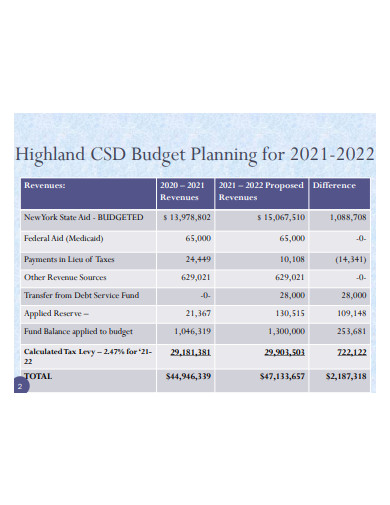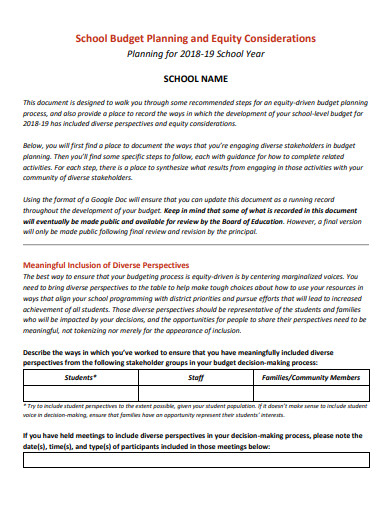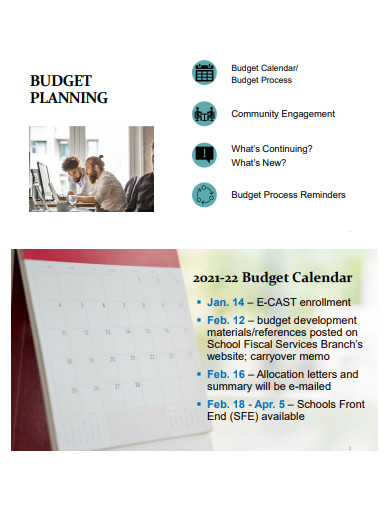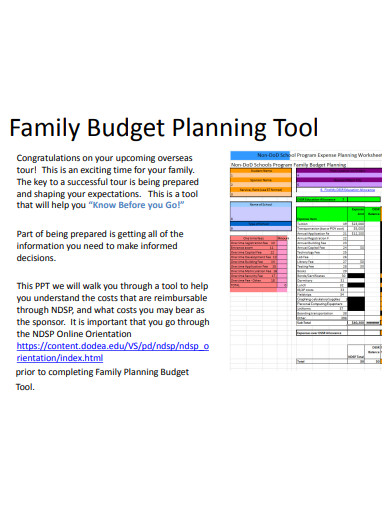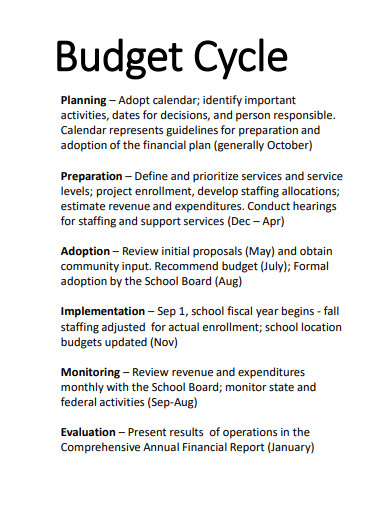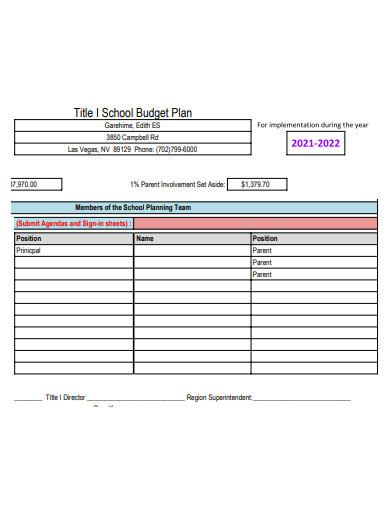The goal of a school budget is simple: to develop and implement a financial plan that will ensure adequate funding for all initiatives that benefit kids. We all know that the school budget affects more than just keeping the school afloat. Students will receive high-quality learning experiences and will take this information into adulthood if they follow the road of best school finance practices. The chore of drafting a budget, although its importance, can be intimidating. Every fiscal year, the most labor-intensive project a school district’s business office conducts is the creation of a school budget.
Unsurprisingly, the most significant annual project a school business office will be responsible for is drafting the school district’s budget. The school budget is a visible deliverable of the district’s educational obligations to its community, not just a financial planning document or a cost tracking tool. Every year, school boards, superintendents, and administrative teams set a variety of worthwhile educational goals for a district. However, none of the objectives will be met until they are clearly stated in the school’s budget. Although the school budget is critical to the district’s educational goals, the process of creating a decent budget is not difficult. While specific components of the budget planning process are affected by local areas and regulations, the main processes are universal.
7+ School Budget Plan Samples
1. School Budget Plan
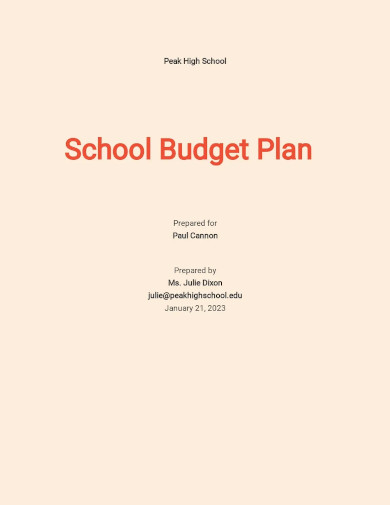
2. Central School Budget Plan
3. School Budget Plan and Equity Consideration
4. Simple School Budget Plan
5. Filmy School Budget Plan
6. High School Budget Plan
7. School Year Budget Plan
8. School Annual Budget Plan
Developing a School Budget Plan
- Develop a budget calendar – Budget calendars are best constructed backward, beginning at the end. The formal budget approval vote by the school board or governing body is the end of the budgeting process in most places. The majority of states have their own statutory budget adoption deadlines that must be met. The school business official must make certain that a calendar is created that schedules input from all necessary programmatic personnel and permits the budget to fulfill all statutory deadlines. The budget calendar can also be used as a reference point for following the budgeting process.
- Learn to start early and end late – By the end of the first few months of your budget calendar, you should have a comprehensive staffing roster. Then, in the last few months of your budget cycle, repeat the process. Because it nearly usually picks up multiple mid-year staffing changes that occur in the middle months of the budget formulation process, the later roster has far more accurate budgetary data than the former. The earlier staffing roster is useful since it provides you with a solid idea of what the budget will look like for at least 64% of it.
- Leverage Broker Projections – Almost always, health insurance is the most expensive benefit category. Some districts buy their own health insurance, while others are members of state-run or regional insurance pools. Predicting the rise in health insurance premiums necessitates the use of a crystal ball. If you don’t have access to a crystal ball, an insurance professional can provide a budgetary forecast of where health insurance premiums will go. If your district is part of a state-run or regional joint insurance fund, you should be able to use an official projection. It’s always useful to be able to cite an insurance industry expert’s forecast when defending your health insurance budget numbers.
- administrative team meetings that tell about curriculum and programming – You may believe that staying in your lane is the best option. However, keeping your finger on the pulse of what’s going on in some of these programmatic sessions has its advantages. On occasion, business executives must remind administrators that the new program upgrade they had been pitching for months was not budgeted for anywhere in the departmental budget forms they had submitted. Making changes throughout the budget creation process is always easier than making changes after the budget has been accepted. Keeping up with new efforts will help you check their budget submittals for essential elements that may have been overlooked.
- Rank line-item submission – This is perhaps the most basic budgeting technique that pays off the most in terms of streamlining the budgeting process. Many stakeholders make budgetary requests over the course of the budget development calendar. It’s an uncommon occurrence for school business administrators to be able to accommodate every single budget request in the following year’s budget. Cutting is an essential aspect of the procedure.
- Develop three school budgets – The closer you get to finishing your budget, there will always be one or two important variables about which you have no idea what will happen. You must be prepared to pivot fast once you determine whether those significant unknowns are positive or negative. Districts in several states receive their state assistance funding allocations just two weeks before they must submit their budgets. You’ll have to make some educated guesses about what the settlement amounts will be. Then you’ll need two contingency plans, one for a positive settlement and the other for a bad one.
FAQs
What are the clauses for school budgeting?
1) The budget must be balanced so that current revenue meets current school spending; 2) The budget must comply with all applicable legal requirements, including federal, state, and local; and, 3) the budget must serve as a foundation for evaluating the school’s services, costs, and accomplishments.
What are the elements contained in a strategic financial plan?
- Defining a common Mission and Purpose
- Creates a Decision-Making Framework and Direction.
- The Fundraising Foundation is a non-profit organization dedicated to raising funds
- Resources-to-Opportunities Allocation
- There are tools for monitoring performance in this section.
- Demonstrates organizational effectiveness and dedication
If you want to see more samples and formats, check out some school budget plan samples and templates provided in the article for your reference.
Related Posts
FREE 9+ 30-Day Marketing Plan Samples in PDF | MS Word | Apple Pages | Google Docs
FREE 3+ Sales Team Action Plan Samples in PDF | MS Word | Apple Pages | Google Docs
Marketing Plan For Small Business Samples
FREE 7+ Fashion Business Plan Samples in PDF
FREE 10+ Sprint Planning Samples In MS Word | Google Docs | PDF
FREE 10+ Wedding Planning Samples in MS Word | Apple Pages | Powerpoint | PDF
FREE 9+ Monthly Study Planner Samples in PSD | Illustrator | InDesign | PDF
FREE 9+ Sample Curriculum Planning Templates in PDF | MS Word
FREE 10+ Teacher Development Plan Samples in MS Word | Google Docs | Apple Pages | PDF
FREE 10+ Basketball Practice Plan Samples in PDF
FREE 12+ School Business Plan Samples in PDF | MS Word | Apple Pages | Google Docs
FREE 7+ Client Strategic Plan Samples in PDF | MS Word
FREE 11+ Trucking Business Plan Templates in PDF | MS Word | Google Docs | Pages
FREE 7+ Small Hotel Business Plan Samples PDF | MS Word | Apple Pages | Google Docs
FREE 14+ Bakery Business Plans in MS Word | PDF | Google Docs | Pages

